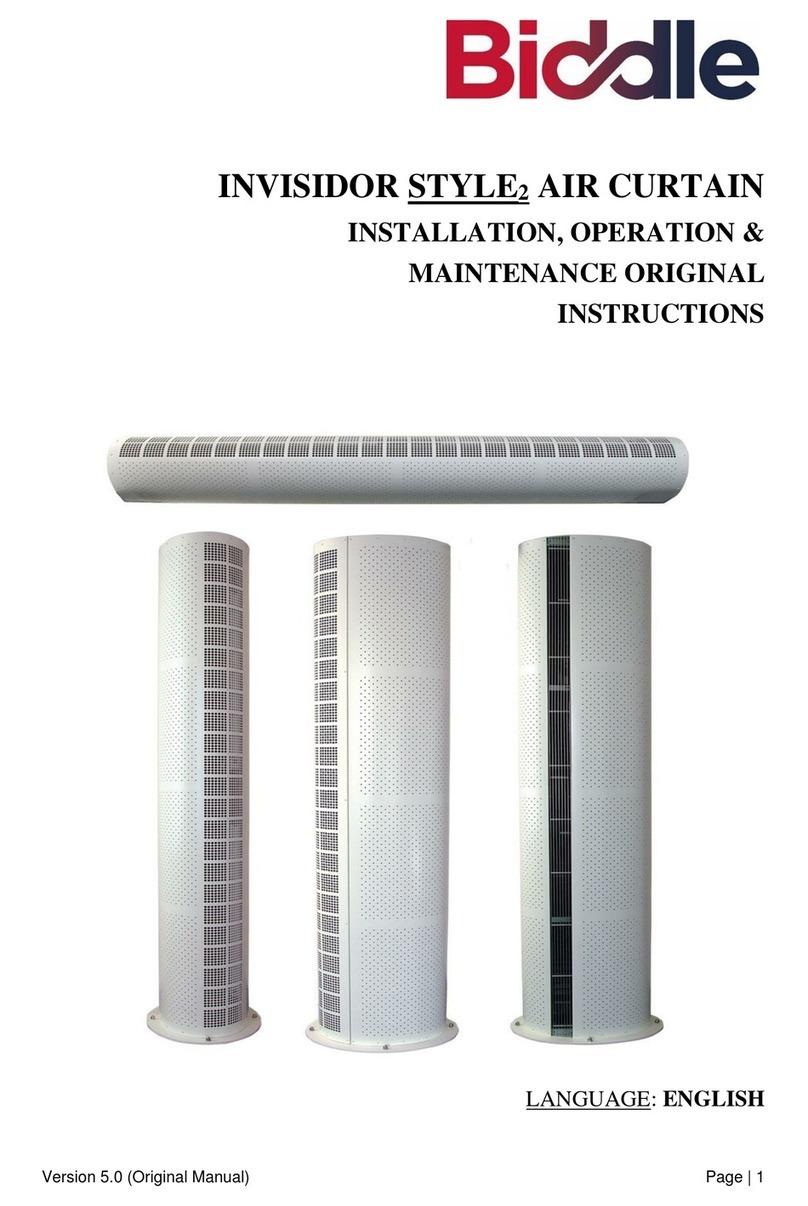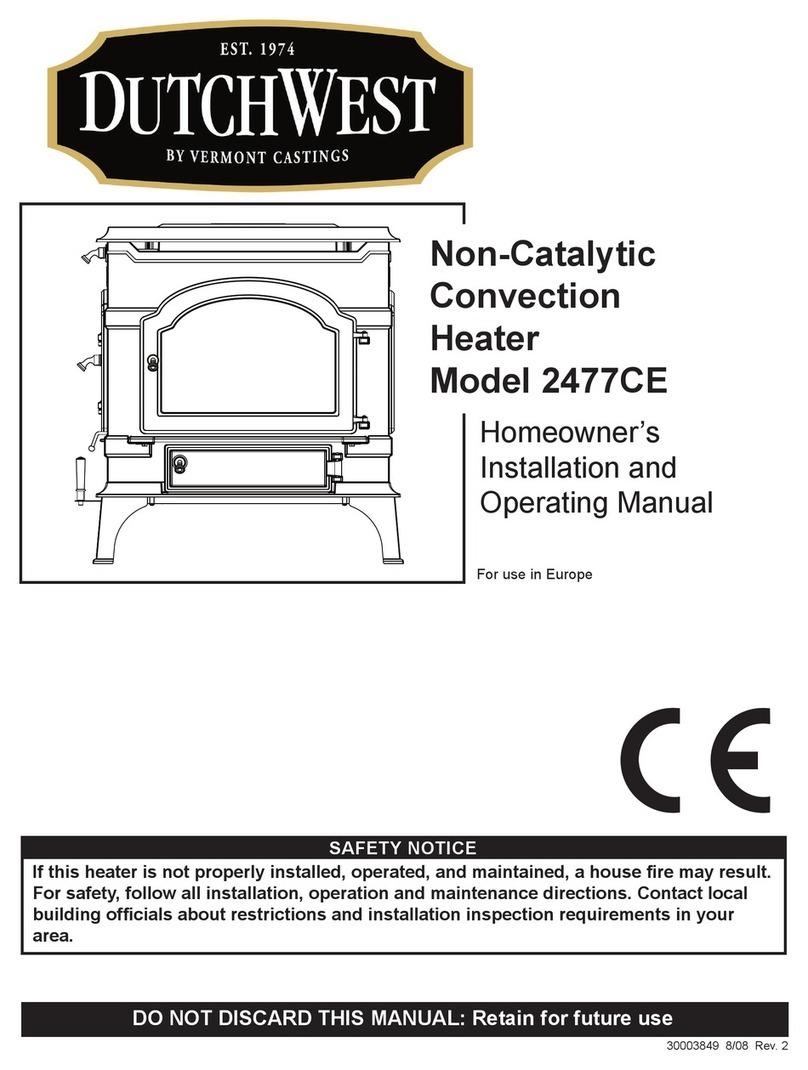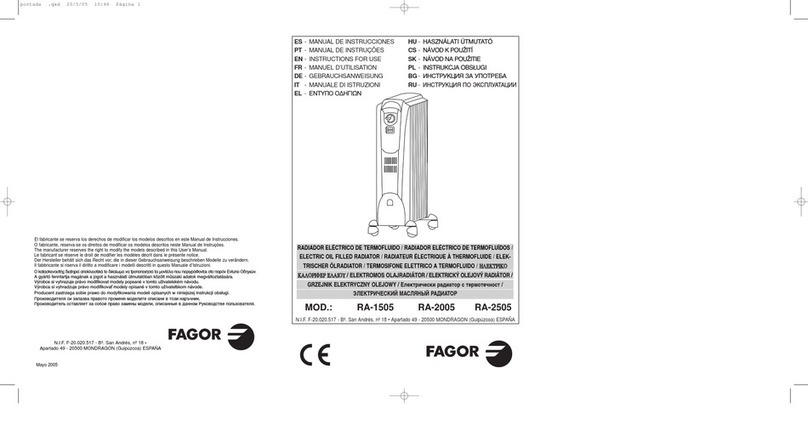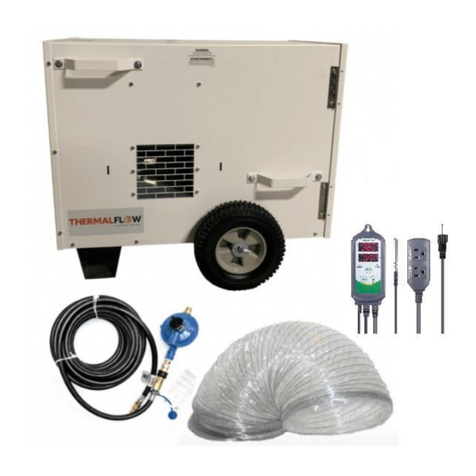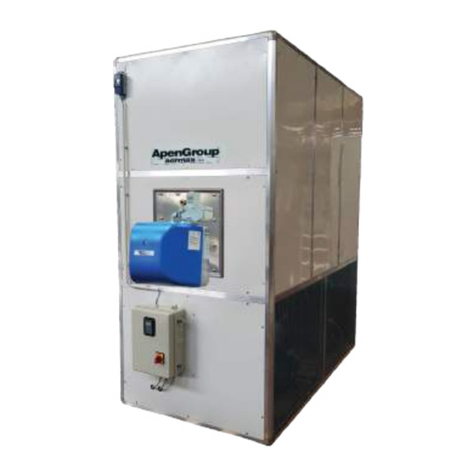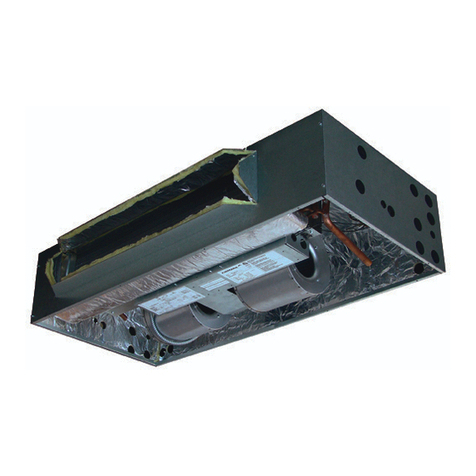
IO-123090-GFW-020113 - 2 -
©2013 AirMark
Safety Instruction
Potential safety hazards are alerted using
symbol. The symbol is used in conjunction with
terms that indicate the intensity of the hazard.
WARNING
This symbol indicates a potentially
hazardous situation which if not avoided, could
result in serious injury, property damage, product
damage or death.
CAUTION
This symbol indicates a potentially
hazardous situation which if not avoided, may
result in moderate injury or property damage.
WARNING
Certified technicians or those
individuals meeting the requirements specified
by NATE may use this information. Property
and product damage or personal injury hazard
may occur without such background.
WARNING
All power sources should be
disconnected prior to servicing. Failure to do so
may cause personal injury or property damage.
WARNING
Product designed and
manufactured to permit installation in accordance
with local and national building codes. It is the
installer’s responsibility to ensure that product is
installed in strict compliance with national and local
codes. Manufacturer takes no responsibility for
damage (personal, product or property) caused
due to installations violating regulations. In
absence of local/state codes, refer to National
Electric Code: NFPA 90A & 90B Uniform
Mechanical Code.
WARNING
When this unit is installed in an
enclosed area, such as a garage or utility room
with any Carbon Monoxide producing devices (i.e.
automobile, space heater, water heater etc.)
ensure that the enclosed area is properly
ventilated.
CAUTION
Only factory authorized kits and
accessories should be used when installing or
modifying this unit unless it is so noted in these
instructions. Some localities may require a licensed
installer/service personnel.
WARNING
Unit is not approved for outdoor
installations.
WARNING
The unit is designed for operation
with 108/120 V, single phase, 60 Hz power supply.
Airmark will not be responsible for damages
caused due to modification of the unit to operate
with alternative power sources.
Inspection
On receiving the product, visually inspect it for any
major shipping related damages. Shipping
damages are the carrier’s responsibility. Inspect
the product labels to verify that the model number
and options are in accordance with your order.
Manufacturer will not accept damage claims for
incorrectly shipped product.
Installation Preparation
Read all the instructions in this guideline carefully
while paying special attention to the WARNING
and CAUTION alerts. If any of the instructions are
unclear; clarify with certified technicians. Gather all
the tools needed for successful installation of the
unit prior to beginning on the installation.
This unit is designed for zero clearance installation
on three sides and adequate clearance to provide
access for service in the front. A min of 2.5 – 3.5
feet clearance is recommended on the front end.
These units are designed to be installed on top of
a water heater or recessed into a wall. The unit
should be installed in Vertical Upflow position
ONLY. While installing the unit into a recessed
wall, attach unit to "4"2 framing stud along the
front flange. These air handlers are provided with
an offset hanging bracket at the rear for certain
wall mount applications.
The drain lines must be installed with ¼” per foot
pitch to provide free drainage. A condensate trap
MUST be installed on the primary drain line to
ensure proper drainage of the condensate. The
trap must be installed in the drain line below the
bottom of the drain pan. Figure 1 illustrates the
typical drain trap installation.
These units are equipped with a bottom primary
and secondary drain and a single side primary OR
secondary. When utilizing the unit, disable switch
on the secondary line. It must be located on the
side connection to avoid a false shutdown created
by condensate droplets falling into the bottom
secondary connection. The switch should be
adjusted to permit normal operation of the unit and
disable the unit in the event of a clogged primary
before the condensate spills over the pan. In lieu of
this a hood may be field fabricated to slide over the





